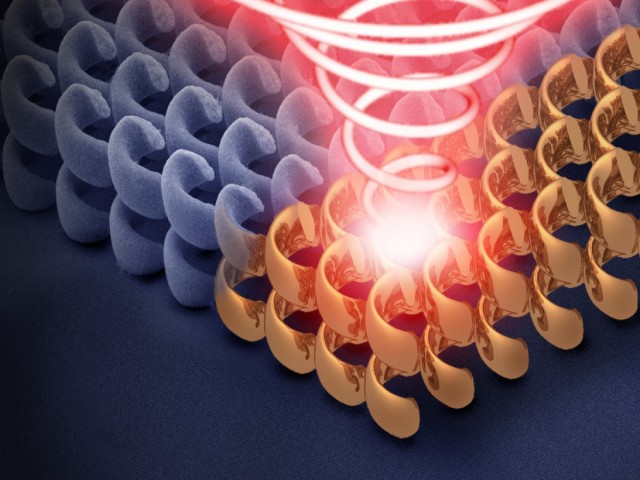Tracking light in, essentially, a tiny pinball machine
Ars Technica » Scientific Method 2012-10-23
If you want to communicate a lot of information very fast and in a very short time, then you have to use light. Indeed, modern communications relies on this. Yet, communications of the very small scale still rely on passing currents along wires. The wires connecting transistors on a chip consume a significant amount of power, and generate a significant amount of heat. So it's slow, and wasteful—a happy combination to make any engineer leap with joy.
We would love to convert to optical interconnects, both on-chip, and between chips, but the technology just isn't there yet. The problem boils down to one of materials. The wavelength of light is long compared to chip features, so traditional techniques for guiding light result in interconnects that are much larger, and require wider spacing than wires. Instead, we need to create materials that respond to the light in such a way as to confine it very tightly.
Unfortunately nature isn't kind enough to just leave these materials lying about. Instead, we have to create them artificially. Then there is the problem of understanding what you have created. This involves tracking the light as it passes through your material. This has been a very tough problem to crack, but an international team of researchers has now hit on a pretty good solution.
Read 11 remaining paragraphs | Comments
